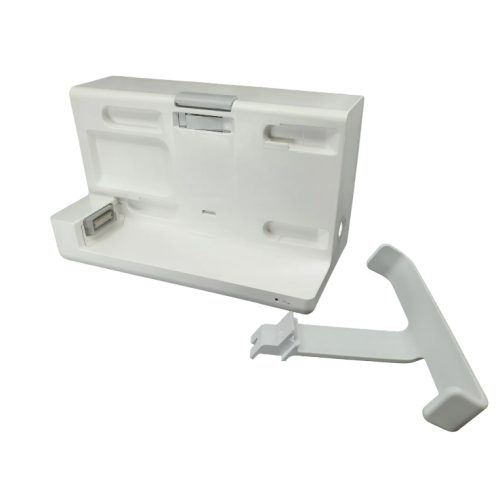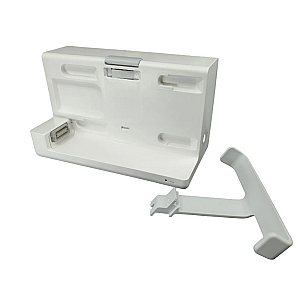The Philips IntelliVue Dock 867043 docking station is designed to safely power and secure IntelliVue X3 and MX100 monitors. Ideal for hospital use, it ensures stable monitor operation by providing mains power, recharging the internal battery and enabling network connection. Compact and robust, it can be easily mounted on rails or IV stands thanks to its adapted brackets. With synchronised output ports, it facilitates integration with other medical devices. The IntelliVue Dock ensures continuous, safe monitoring, even when on the move.
IntelliVue 867043 Docking Station - Good Condition


Offer Details
Options :
philips intellivue docking station charger 867043 - X2 X3 MP2 MX10 100-240 volts
Description
Philips IntelliVue Dock 867043 docking station – Optimise continuous patient monitoring
The Philips IntelliVue Dock 867043 is a versatile and reliable docking station designed specifically for IntelliVue X3 and MX100 patient monitors. This essential accessory makes it easier to use monitors at the patient's bedside or during internal transport, ensuring a stable power supply, efficient battery charging and connection to hospital information systems via the wired network.
When the monitor is attached to the IntelliVue Dock and the dock is connected to the mains, it powers both the monitor and any measurement extensions. This frees up the internal battery for transport situations, while ensuring that it is charged for optimal autonomy.
The base is also equipped with a flexible synchronisation output connector, allowing physiological signals to be transmitted to other medical equipment (e.g. external ECG devices). This promotes better coordination between connected devices in intensive care, operating theatre or emergency environments.
The Dock connects via the MSL connector, which ensures smooth communication between the monitor and the hospital network or a computer equipped with Philips IntelliVue XDS software. This configuration enables remote viewing, centralised documentation and continuous clinical supervision.
Installing the monitor on the station is simple: just align it and slide it sideways until it clicks into place. A green LED lights up to confirm that the mains power is connected.
The 867043 station can be flexibly installed on different supports using two types of mounts:
- Bedhanger bracket for suspension on a rail or bed with safety stop
- Rotating claw mount (quick claw) for attachment to an infusion stand or vertical pole
The station complies with electrical safety standards (IEC 60601-1) and can be safely integrated into any compliant medical environment. It must only be used with medically certified devices.
The IntelliVue Dock 867043 is an essential asset for continuous, modular monitoring, particularly during patient transfers or in units requiring a high degree of adaptability.
Features
- Provides stable power to the monitor and its extensions
- Automatically recharges the integrated battery of the X3 or MX100
- Enables secure network connection for centralised documentation
- Includes a flexible synchronisation output for interfacing with other medical equipment
- Quick and secure installation on wall mount, bed or IV stand
- Clear status LED to confirm proper operation
- Contributes to uninterrupted monitoring, even during internal transport
- Compatible with standard hospital environments (excluding MRI and explosive atmospheres)
Technical Details
- Compatibility: Philips IntelliVue X3 and MX100 monitors
- Power supply:
- Mains input via AC connector
- Automatic recharging of the monitor battery
- Connectivity:
- 1 LAN port (wired network)
- 1 synchronisation output connector (Sync Out)
- 1 MSL connector (for connection to the monitor)
- LED indicator:
- Solid green: mains power active
- Compatible mounts:
- Bedhanger bracket for rails or bed
- Rotating claw mount for stand or pole
- Standards: IEC 60601-1, certified for medical use
- Weight: 0.79 kg (1.7 lb)
- Dimensions without cable management: 190 × 112 × 100 mm (7.5 × 4.4 × 3.9 in)
- Dimensions with cable management: 190 × 172 × 100 mm (7.5 × 6.8 × 3.9 in)
Compatible Accessories
- Philips IntelliVue X3 and MX100 monitors
- Mounting brackets:
- Bedhanger Mount (bed mount)
- Quick Claw Mount (clamp mount for stand or pole)
- Synchronisation cable for Sync Out output
- Ethernet network cable for LAN connection
- Philips IntelliVue XDS software (remote display and control)